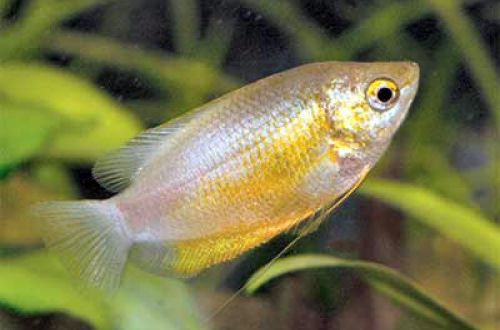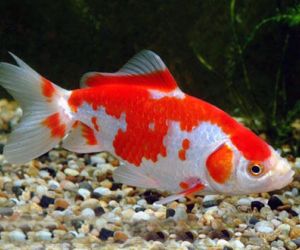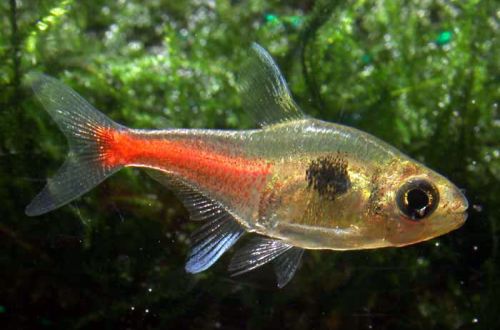
Thick Lipped Gourami
Thick-lipped Gourami or Labiosa, scientific name Trichogaster labiosa, belongs to the Osphronemidae family. A very attractive addition to any aquarium. Its modest size and beautiful natural coloring are reminiscent of the Golden Gourami or one of the varieties of Lyalius. In addition to external similarities, there is indeed a close relationship between these species, they can even produce offspring, which makes even more confusion. Often in pet stores called “Thick-lipped Gourami” they sell either representatives of similar species or hybrid offspring.

In domestic literature and Runet, the fish is called “Labiosa” – the Russian transcription of the Latin word, taken from the scientific name. It translates as “Lip”, indicating the somewhat thickened or even thick lips of this fish, which served as the name for the whole species.
Habitat
The original habitat was limited to the zone of tropical South Asia, in particular, it was first discovered and scientifically described in 1877 in Burma. Currently, the species has been introduced to South America, where it is most widely distributed in Colombia.
Thick-lipped gourami can be found in rivers, ponds, irrigation canals and rice fields. They prefer areas of water with a weak current with a large number of root and floating plants. In nature, they feed on small invertebrates, insects and other zooplankton.
Description
The body has the shape of an oval, somewhat compressed laterally. The dorsal and anal fins stretch from the middle of the body to the tail, expanding towards the end. The ventral fins are filiform and extremely sensitive; with the help of them, the fish learns the world around them through touching objects.
Like other representatives of the labyrinths, Labiosa has a unique organ that allows it to absorb oxygen directly from atmospheric air while swallowing bubbles from the surface of the water. The labyrinth organ is located in the oral cavity, it looks like a small sac, penetrated by numerous capillaries, resembling a miniature labyrinth.
The main color is orange or yellow-brown in the front of the body, males have turquoise stripes that run vertically all over the body from the head to the caudal fin. During spawning, the color becomes brighter. The females are olive in color, the stripes are almost invisible. There are artificially bred varieties in which the colors are more pronounced, they are red, orange, yellow.
Food
They prefer meat products, but in the home aquarium they are able to adapt to dry industrial food, it is important that they are of high quality. A good food balance can be maintained by combining dry food (flakes, pellets, etc.) with live food, such as bloodworms. Once or twice a week, it is advisable to give herbal supplements in the form of dried plates, herbal tablets (sold in pet stores).
Maintenance and care
A small group of two or three fish will not require a large tank, an aquarium of 60-70 liters will be sufficient. It must be equipped with a lid, it prevents accidental entry of foreign objects into the water, and also creates a warm layer of air above the surface, which significantly reduces the risk of damage to the labyrinth organ of the fish during swallowing air due to the temperature contrast. A set of mandatory equipment consists of a filter, a heater, a lighting system and an aerator. The filter must be efficient enough, but at the same time create as little water movement as possible, since even weak currents inside the aquarium are poorly tolerated by Labios. It is recommended to update the water weekly by 25% and closely monitor the pH and dH parameters, unlike their relatives, the Thick-lipped Gourami has a narrower range of acceptable values uXNUMXbuXNUMXbof these indicators.
In the design, use a large number of root and floating plants, arrange them in groups to leave free areas for swimming. Make sure that floating plants do not prevent the fish from freely rising to the surface for another portion of air. Provide shelters in the form of snags, grottoes, tree roots and the like. Their number should be equal to the number of fish in the aquarium. A dark substrate will favorably contrast and emphasize the color of the fish.
Social behavior
Peaceful species, they behave very timidly in a new aquarium, fading of color is possible at first. Neighbors should be chosen based on the temperament of the fish and its size. Peaceful calm fish of a similar size are welcome. An active or aggressive species can easily intimidate a Gourami, causing it to constantly be near shelters, experience stress and possibly refuse to eat. Also, you should not add territorial fish and those who are prone to biting the fins of other species, for example, Barbs belong to them. In this case, Thick-lipped Gourami will be an excellent target for them.
There is also a weakly expressed intraspecific hierarchy, but not as aggressive as that of their relatives. They can perfectly live in groups of 5 or more individuals without visible conflicts.
Breeding / breeding
One of the easiest gourami species to breed, however, this will require a separate tank as the parents may eat their offspring. A spawning aquarium with a volume of 20 liters should be filled with water only 15 cm, the rest of the parameters should repeat the parameters from the main aquarium. Of the equipment, it is enough to install a simple sponge filter combined with an aerator, a heater and a lighting system, for example, in the form of a table lamp. Plants should be sufficient, including floating, preferably with large leaves.
The stimulus for spawning is the inclusion of meat products in the daily diet and setting the temperature in the range of 26–29°C. At this time, the pair should be separated, the male is placed in the spawning aquarium, and the female remains in the general aquarium. Within a couple of weeks, the female will begin to fill with eggs, and the male will start building the nest. It can be of impressive size, occupying up to half of the surface of the water. At the end of the construction, connect the couple together, the courtship process will begin. The male will swim back and forth near the female with raised fins and tail up, then they cuddle and the male seems to wrap around the body of the female.
The female releases several eggs at a time, which are immediately fertilized and transferred to the nest. Adults are able to release up to 500 eggs. When spawning is over, the female returns to the general aquarium, and the male remains to guard the masonry until the fry appear. Then it is time for him to return, otherwise he will eat his young. Feed the fry with micro food, ciliates.
Fish diseases
Thick-lipped Gourami is a very hardy and unpretentious fish; in a balanced aquarium with an established biological system, there are no health problems. Outbreaks of disease occur only when conditions deteriorate significantly, poor nutrition or contact with sick fish. Read more about symptoms and treatments in the Aquarium Fish Diseases section.





